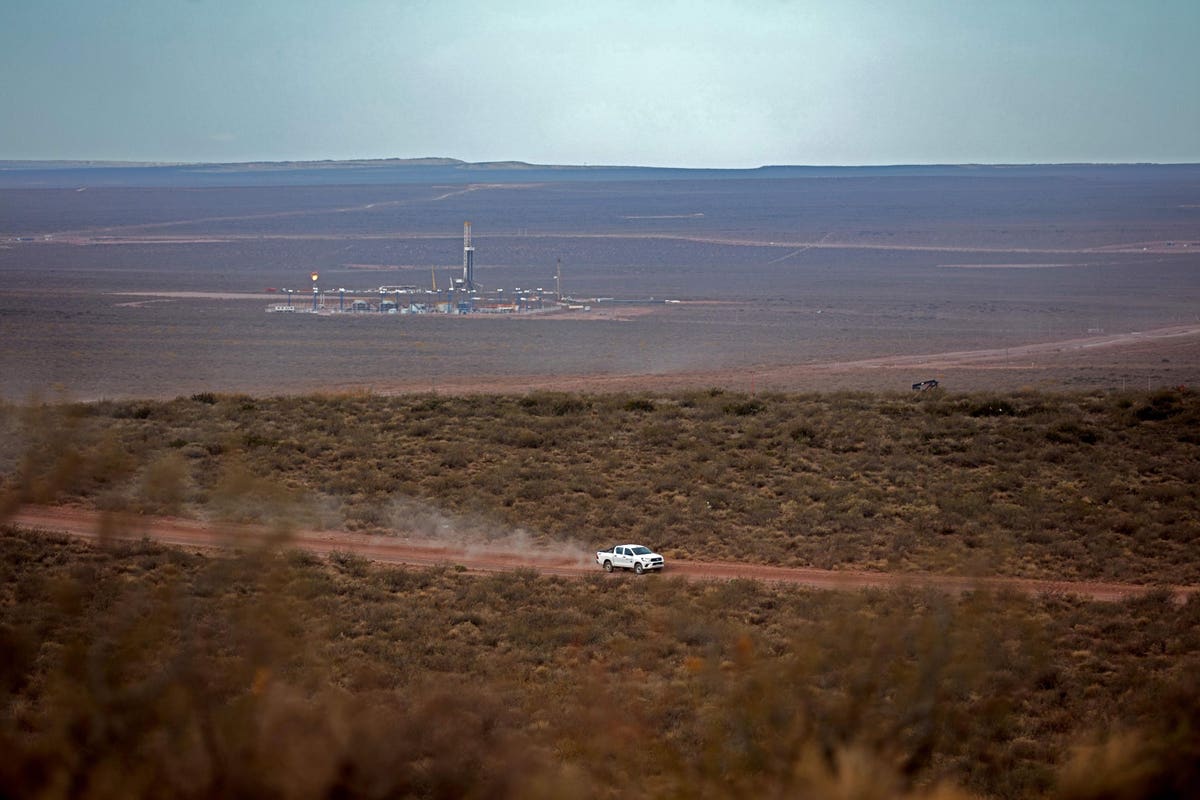By Mark P. Jones
On August 13 the Argentine province of Santa Cruz will elect its governor and the 24 members of its unicameral provincial legislature for four-year terms. The outcome of the election remains in doubt, with the governing Peronist Unión por la Patria (UP) alliance being challenged by a diverse coalition of parties and individuals, some of whom have a long history of opposing the Peronist administrations which have run the province for the past 40 years and others who were until recently allies of the Kirchner-backed Peronist administration. One of these former Kirchner allies is Claudio Vidal, the leader of the Santa Cruz oil workers union, who has a good chance of becoming the next governor of Santa Cruz.
Santa Cruz produces 11% of Argentina’s petroleum, behind the provinces of Neuquén and Chubut (Santa Cruz’s neighbor to the north). Santa Cruz also produces 7% of Argentina’s natural gas, third behind Neuquén and offshore production in federal waters. And, it is home to the relatively unexplored Palermo Aike shale formation. Finally, one-half of Argentina’s active gold mines along with the its only coal mine (in Río Turbio) are located in Santa Cruz.
Santa Cruz has been governed by a member of Argentina’s Peronist movement continuously since the country’s return to democracy in 1983. Since 2015 Santa Cruz has been led by Governor Alicia Kirchner, sister of former president Néstor Kirchner (2003-2007) and sister-in-law of former president (2007-2015) and current vice president, Cristina Fernández de Kirchner. Néstor Kirchner was governor of Santa Cruz from 1991 until 2003, when he resigned to assume office as president.
In 2023, just as in 2019 and 2015, Santa Cruz will employ a double simultaneous vote (DSV) electoral system for its gubernatorial election. This means that multiple candidates can run as part of an alliance and their votes are summed together in order to determine the plurality winner among the different alliances, with the candidate who receives the most votes within the alliance winning the plurality of the vote elected governor.
Five alliances are participating in the 2023 gubernatorial election, with a number of candidates within each alliance that ranges from one to six. Recall, that the victor of the gubernatorial election will be the candidate with the most votes within the alliance with the most votes, meaning that the candidate who receives the most votes overall may not win.
The UP of Governor Kirchner is fielding three gubernatorial candidates: Javier Belloni, Pablo Grasso and Guillermo Polke. Belloni is the mayor of El Calafate. In 2019 he competed as one of the three UP (then named the Frente de Todos, FdT) gubernatorial candidates, who combined won 59% of the vote. Belloni finished narrowly behind Alicia Kirchner (35% to 39% of the FdT vote), who was victorious and re-elected as governor. Grasso is the mayor of Río Gallegos, Santa Cruz’s capital and most populous city, containing more than one out of three Santa Cruz residents. Polke is the president of the Santa Cruz Economic Federation. Within the UP, Grasso and Belloni both have a realistic chance of finishing first, and thereby becoming the next governor of Santa Cruz if the sum of votes received by the three UP candidates is greater than that of each one of the four other alliances competing.
The principal mainstream opposition to the UP failed to form a single alliance due to differences over the candidacy of Claudio Vidal who, in addition to being the leader of the Santa Cruz oil workers union, is a national deputy. In 2019, Vidal competed in the gubernatorial election against Alicia Kirchner and Belloni from within the UP/FdT alliance, finishing third with 26% of the UP/FdT vote.
A majority of the opposition leaders in the province opted for a big tent approach to the 2023 gubernatorial election, joining with Vidal in the Por Santa Cruz (PSC
PSC
The remaining mainstream opposition leaders, belonging to the Unión Cívica Radical (UCR), are grouped in a second opposition alliance, Cambia Santa Cruz (CSC). At the national level the principal opposition alliance, Juntos por el Cambio (JxC), is led by Propuesta Federal (PRO) and the UCR. JxC has splintered in the Santa Cruz gubernatorial election, with the PRO (via Markic’s candidacy) allying with Vidal, and the UCR along with other JxC members, such as the Coalición Cívica-ARI, competing under the CSC banner. The leading CSC candidate is national deputy Roxana Reyes, who will be competing with businessman Mirey Zeidán within the CSC alliance.
Two far-left gubernatorial candidates alliances are fielding candidates. The Frente de Izquierda y de Trabajadores-Unidad alliance’s candidate is Juan Valentín and the Movimiento al Socialismo’s candidate is Gustavo Nauto. Neither will win a share of the vote beyond the low single digits.
On August 13, there will be two results to pay close attention to, which together will determine who becomes the next governor of Santa Cruz. First, which alliance’s gubernatorial candidates, the UP or PSC, wins the most votes combined. Second, which candidate within the respective alliance wins the most votes, a contest between Belloni and Grasso within the UP, and a contest that Vidal is heavily favored to win within the PSC. If the UP is victorious and ends up remaining in power with either Belloni or Grasso at the helm, it will likely be the consequence of the split in the opposition which divided the anti-UP vote between the PSC and CSC alliances. If the PSC is victorious with Vidal elected governor, Santa Cruz’s oil workers will have one of their own at the pinnacle of political power in the province.
This is the seventh entry of a series on the 2023 gubernatorial elections in Argentina’s leading petro-provinces (Chubut, Mendoza, Neuquén, Río Negro, Santa Cruz, Tierra del Fuego) and mining provinces (Catamarca, Jujuy, Salta, San Juan, Santa Cruz). The previous six entries are below.
February 20, 2023.
The Battle for Control of the Vaca Muerta is Formally Underway: Neuquén 2023
February 24, 2023.
Alberto Weretilneck Set To Return as Governor of the Vaca Muerta’s Río Negro Province
March 28, 2023.
Incumbent Governors on Track for Victory in Argentina’s Lithium & Copper Belt Provinces: Jujuy, Salta & San Juan
April 17, 2023.
A Political Earthquake in Argentina’s Vaca Muerta: The 2023 Neuquén Gubernatorial Election
May 16, 2023
Governing Parties Prevail In 4 Argentine Mining & Petro Province Elections: Jujuy, Salta, La Pampa & Tierra del Fuego
July 28, 2023
The July 30 Gubernatorial Election In Chubut, Argentina’s No. 2 Petro-Province
Mark P. Jones is the Joseph D. Jamail Chair in Latin American Studies and the Director of the Center for Energy Studies’ Argentina Program at Rice University’s James A. Baker III Institute for Public Policy.
Read the full article here





